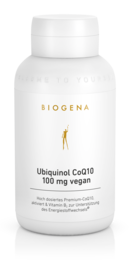Birds are singing, flowers are blooming and the scent of a fresh start is in the air – it's springtime at last! While some of us are bursting with energy, others are hit by the notorious springtime fatigue. But what causes this low point, what are its causes, what helps against this tiredness and what do our cells need so that we can start the new season full of energy?
Spring as a happiness booster: less melatonin, more serotonin
Let us first consider those people who literally blossom in spring. Why does spring cause their mood to rise so dramatically? Scientists blame two hormones for these changes: melatonin and serotonin.
- Melatonin: This is the so-called sleep hormone that regulates our sleep-wake cycle. The pineal gland in our brain is responsible for producing and releasing this messenger substance. The rule here is: the longer the night or the dark phase, the more melatonin is produced. This is why many people feel listless and tired in winter. When the days start getting longer again in spring, the melatonin concentration in the blood drops again, noticeably boosting our energy levels.
- Serotonin: The good weather is also boosting our mood: when the first warm rays of spring touch our uncovered skin, the happiness hormones released awaken our body to new life. One of these is serotonin. Also known as the happiness hormone or pleasure messenger, it increases our zest for life, improves our sense of well-being and dispels negative moods and fears. Serotonin also plays a role in the regulation of sugar metabolism, satiety and the sleep-wake rhythm.
The sun as a feel-good factor and vitamin D filling station
The sun can also help many people to feel more energetic again after the winter. A bath in the spring sun has been shown to lift the mood – this is also confirmed by numerous studies that show a link between a lack of light and a depressed mood.
With the arrival of spring, the time when the body can produce vitamin D itself through sunlight begins again. After the dark winter months, the body's own stores are often severely depleted due to the low-light season, which can lead to a vitamin D deficiency. However, studies show that even with good exposure to the sun, a sufficient supply of UV radiation alone is often not achieved. Therefore, it makes sense to take additional vitamin D supplements. Among other things, vitamin plays an important role in the immune system and supports our defences, especially in the changeable transition period.
When spring tiredness strikes: causes
But not everyone experiences a surge of energy in spring – some people struggle through the days feeling permanently tired, weak and listless. The exact causes of springtime tiredness are not yet fully understood, but experts suspect that adjustment difficulties of the organism play a central role. This means that the change in the length of the day can cause an imbalance in the human melatonin-serotonin balance – the body needs a few weeks to restore balance and readjust the hormone balance. In addition, rising temperatures dilate the blood vessels, which can cause blood pressure to drop. This can affect the oxygen supply to our brain and also contribute to springtime fatigue.
Spring fatigue: common symptoms
The most common symptoms of springtime fatigue include a certain tiredness despite unchanged sleeping habits. The following complaints may also occur:
- circulatory problems
- weather sensitivity
- headaches
- irritability
Tips: How to deal with spring fatigue
The good news is that there are a number of things you can do to avoid springtime lethargy:
- Be active: whether it's a walk, a mountain bike tour or a yoga session – exercise gets the circulation going and banishes those springtime blues. Focus on activities in the fresh air, as this is how you supply your body with fresh oxygen and support your immune system at the same time.
- Fill up your vitamin D stores: now is the time to spend as much time as possible outside in daylight to top up your vitamin D and boost your mood. Take vitamin D supplements to supplement this, because the sun alone is not enough to get enough of the vitamin.
- Eat healthily: Nutrition is also fundamental. Now, your diet should include plenty of fresh fruit and vegetables, as these foods provide your body with energy and stimulate your metabolism. Wholegrain products, high-quality fatty acids from nuts or legumes are also good options. Make sure you drink enough.
- Take contrast showers and use cryotherapy: Contrast showers can be another measure. They train the blood vessels, support the immune system and can have a positive effect on your fitness. Cryotherapy, the targeted application of cold, can have a similar effect. The extreme cold promotes blood circulation, stimulates the metabolism and can help to reduce tiredness and listlessness. It also releases endorphins, which can have a positive effect on your well-being.
- Avoid blue light: In particular, avoid smartphones, TV, laptop and co. before going to bed, because their high blue light content can inhibit the production of the sleep hormone melatonin.
- Take vital substances: Those who want to do their body good can also support it from the inside out by supplying certain micronutrients to the organism.
These micronutrients will get you ready for spring
|
Effect on cells and body |
Micronutrients |
|
Energy |
Certain B vitamins out of the vitamin B complex, |
|
Cell protection |
zinc, selenium |
|
Immune system07-25_vitamin-b |
The right vitamins and nutrients to combat springtime lethargy
Those who feel exhausted instead of revitalised in spring can benefit from external support. The following micronutrients can help:
- Coenzyme Q10: This vital substance is important for the energy balance and can boost energy production.
- B vitamins: B vitamins have a similar effect. They are also stimulating vital substances that can have a positive effect on energy production and metabolism. They also support our nervous system and psyche.
- Magnesium: This active ingredient is considered an anti-stress mineral, plays a key role in energy production and helps to reduce tiredness and fatigue.
Zinc and selenium: cell protection is also an issue in spring
In the cells of exhausted people, but also as a result of extensive baths in the spring sun, free radicals also accumulate more and more. If these get out of hand, they can trigger oxidative stress. Then the two trace elements zinc and selenium are in demand. These neutralise free radicals and thus help to protect the cells from oxidative stress.
Conclusion: You don't need much to enjoy spring to the full: warming rays of sunshine, plenty of exercise in the fresh air, healthy food and the right nutrients are a good start.
Sources:
Frühjahrsmüdigkeit--was hilft? [Spring fatigue--what helps?]. Praxis (Bern 1994). 2004 Mar 17;93(12):494. German. PMID: 15072237. https://pubmed.ncbi.nlm.nih.gov/15072237/
Stiefelhagen P. Frühjahrsmüdigkeit oder Eisenmangel? [Spring time fatigue or iron deficiency?]. MMW Fortschr Med. 2015 Apr 16;157(7):25. German. doi: 10.1007/s15006-015-2958-9. PMID: 26012444. https://pubmed.ncbi.nlm.nih.gov/26012444/
Parrish E. Winter blues, spring fever and major depression: Are they the same or different. Perspect Psychiatr Care. 2018 Jan;54(1):5. doi: 10.1111/ppc.12256. PMID: 29319871. https://pubmed.ncbi.nlm.nih.gov/29319871/










